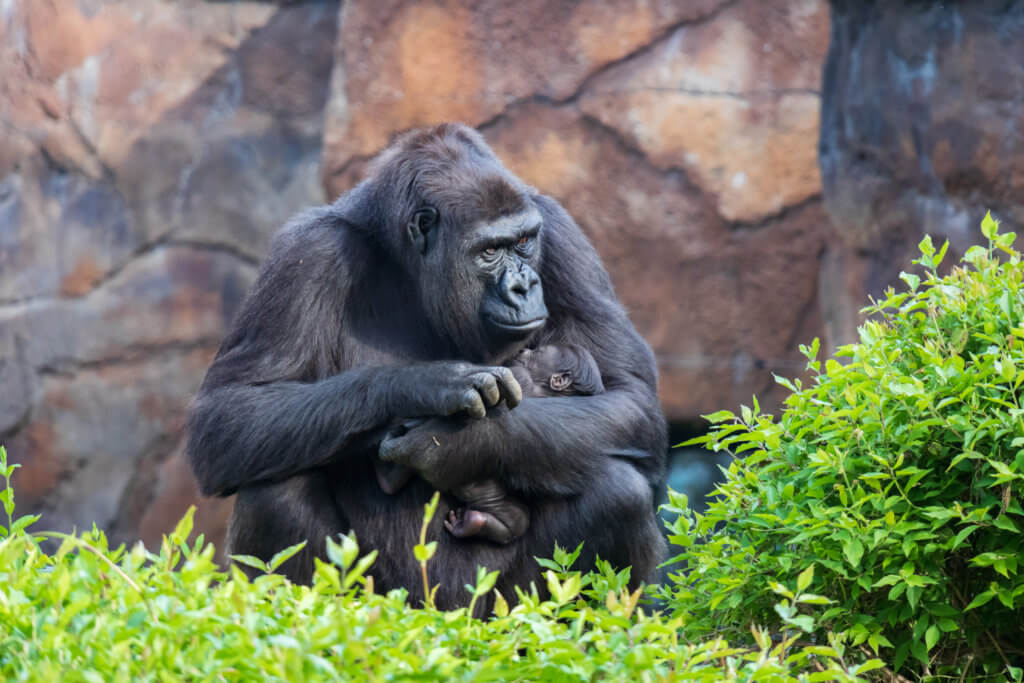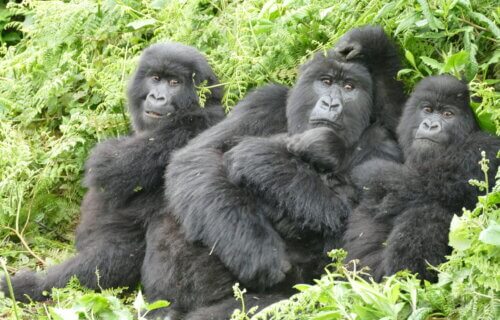ANN ARBOR, Mich. — A new study reveals that gorillas display a remarkable resilience that exceeds that of humans and other species. Typically, most species that encounter significant adversity early in life tend to face greater hardships as they age. Many animals even experience shorter lifespans or health complications, suggesting the presence of an underlying biological mechanism. However, researchers from the University of Michigan have found that gorillas who survive beyond the age of six appear largely unscathed by the difficulties experienced in their youth.
This resilience, evidenced by their ability to withstand events such as the death of their mother, indicates that gorillas have a superior capacity to overcome adversities compared to humans. Prior studies by the Dian Fossey Gorilla Fund, a charity dedicated to protecting endangered mountain gorillas, also observed that young gorillas show surprising resilience when losing their mothers, unlike many other species.
Young animals face many early life traumas in the wild
Despite the loss of a mother being only one of many potential adversities that young animals can face in the wild, the research team identified six different types of early life adversity. These include losing a parent, witnessing the death or killing of infants in their group, experiencing social group instability, having a limited number of age-mates in the social group, and having a sibling born soon after them. The collected data provided information about how many of these early adversities each gorilla experienced, the age at which they occurred, and the gorilla’s lifespan.
The researchers observed the outcomes when a gorilla experienced none, one, two, or three or more adverse events. They discovered that the more adversities gorillas faced before the age of six, the more likely they were to die young. However, if they managed to reach six years of age, their lifespans were not shortened, regardless of the number of adverse events they had encountered. Intriguingly, gorillas who experienced three or more forms of adversity tended to live longer, experiencing a 70-percent drop in the risk of death throughout adulthood.
This pattern was particularly noticeable in male gorillas. The researchers attribute this trend to a phenomenon known as viability selection, implying that a gorilla strong enough to survive such early life events might be a “higher-quality individual” and more likely to have a longer lifespan.
“I was expecting to see that these gorillas would have short lifespans and would not fare well as adults,” says Dr. Stacy Rosenbaum, the study’s author and an anthropologist at the University of Michigan, in a media release. “However, we found that while these events are associated with a higher risk of death when young, if you survive to age six, these events don’t shorten your lifespan. This is quite different from what we see in other species.”

Why are gorillas so resilient?
The researchers propose several theories to explain the resilience of these mountain gorillas. One theory is the supportive nature of gorilla social groups. Previous studies have shown that when a young gorilla loses its mother, it does not become more isolated. Instead, other mother gorillas step in. Dr. Robin Morrison, a researcher with the Dian Fossey Gorilla Fund, explains that young gorillas often spend more time near other gorillas after losing their mother, particularly the highest-ranking adult male.
“These strong networks might provide crucial social buffering, as has been shown in humans. The quality of our social relationships is a significant predictor of our health and longevity, sometimes even more so than genetics or lifestyle.”
Another theory relates to the resource-rich environment in which mountain gorillas live. Unlike other wild primates that constantly face the stress of finding enough food and water, gorillas may find it easier to survive challenging circumstances. The study results suggest that species similar to our own can exhibit significant resilience to early life adversity.
“We should not assume that the long-term negative effects of early life adversity are universal,” cautions Rosenbaum. “We often treat early adversity as a universally compromising experience, assuming that adulthood will be negatively impacted. However, the data, even in humans, are more complex. This research suggests similar complexity in other animals, which I believe is a hopeful story.”
You might also be interested in:
- Scientists find first evidence that chimps, gorillas build long-lasting friendships
- Strength in storytime: Reading aloud to young children triples their resilience
- Stressful events can end up making people more resilient
People can learn from the resilience of other species
Understanding early adverse events in nonhuman species may provide insights into how such events affect humans and potential strategies to mitigate them.
“Surviving early life adversity often correlates with poorer health, fewer offspring, or a shorter lifespan, regardless of the species. There’s a range of adverse consequences in adulthood that seem to make life worse,” Rosenbaum says.
The value of studying animals in this context is that it removes much of the variation present in humans. For instance, animals maintain similar diets, get daily exercise, and lack opportunities to engage in behaviors with negative health outcomes, such as smoking, explains Morrison.
Like humans, gorillas have long lifespans and invest heavily in a small number of offspring, making them a suitable model for understanding the effects of early life adverse events.
The researchers analyzed 55 years of long-term data collected from 253 wild mountain gorillas, consisting of 135 males and 118 females. These gorillas, residing in Rwanda’s Volcanoes National Park, have been monitored for more than five decades by the Dian Fossey Gorilla Fund.
The study is published in the journal Current Biology.
South West News Service writer Alice Clifford contributed to this report.


A LL animals are ‘resilient’, for they (fauna) were created along with their habitat (flora) to both be suited for each-other. Humans are vulnerable, because they are to operate WITH THEIR MINDS (hands off) and FROM above.
Well show me the gorilla safe spaces ..dei leaders…college dorm rooms…and revisionist gorilla history and they will be as weak as our young